We handpick the top 20 Prettiest Flowers in the World for their exquisite color palettes, shapes, and textures!
Most flowers are filled with grace and beauty, but even in the world of blooms, some are undisputed champions. Our exclusive pageant for the Prettiest Flowers handpicks aren’t just stunners but come with oodles of personality.
Check it out!
Prettiest Flowers On The Planet
1. Painted Tongue
Botanical Name: Salpiglossis sinuata
Salpiglossis translates to ‘trumpet’ and ‘tongue’ in Greek, suggesting their uncanny appearance. Commonly called the Painted Tongue, this annual heirloom flower from Chile produces scalloped velvety flowers in a host of Kodachrome hues. Emerging in shades of reds, purples, and yellows, its petals bear marbled patterns with deep, light-colored centers.
This trumpet-shaped flowering nightshade thrives in cool summers with full sun. Tall plants may need staking, and deadheading spent flowers ensures recurring blooms.
2. Orchid

Botanical Name: Orchidaceae
With over 28,000 different species, it’s hard not to produce the most spectacular sights! In fact, during the Victorian era, the wealthy were afflicted with Orchid Fever—an insatiable obsession with possessing exotic varieties of orchids from across the world, that too for exorbitant prices!
Emerging in every imaginable color and pattern, orchid flowers are monosymmetrical, with both halves of the bloom mirroring each other. They appear with three petals, one of which forms a pouty lip. This flower is peculiar as both male and female parts fuse into a column.
3. Fall Crocus

Botanical Name: Colchicum autumnale
In autumn, they produce bouquets of cup-like blooms in shades of patterned pink, purple, white, and lavender. They typically blossom long after their leaves have died back, giving them the nickname “naked ladies.”
Plant these beauties in summer to truly enjoy their blooms in fall. While possessing medicinal properties, this plant is toxic and should not be ingested.
4. Day Lilies

Botanical Name: Hemerocallis
The stunning trumpet-shaped flowers of the day lily bloom in a beautiful yellow, orange, red, and pink color. You can enjoy each bloom for a short period as these last only a day, but the plant produces numerous flowers successively over several weeks.
Plant daylilies in well-drained soil in full sun to partial shade. Also, water them well so the soil stays slightly moist but not waterlogged.
5. Dutch Iris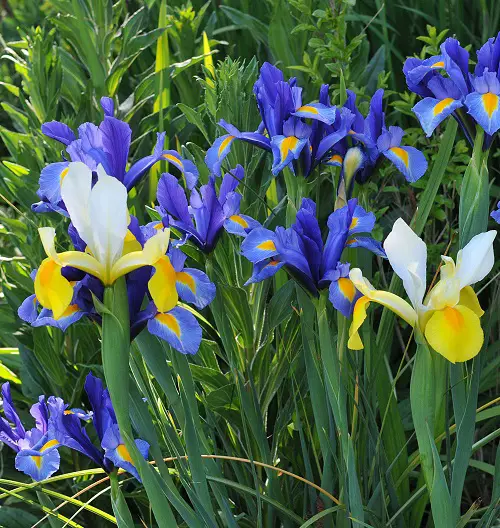
Botanical Name: Iris × hollandica
Emerging from droplet-shaped bulbs and not thickened roots like other varieties, Dutch Iris is specially grown for its looks! Producing silken blooms in rich purple, bright yellow, and pure white, the Dutch developed this cultivar from its Spanish parent.
Prized for its longevity, each slender stem carries many flowers that reach 8 to 24 inches tall. Blooming in spring and early summer, plant these varieties in groups for an abundant display.
6. Lily of the Nile
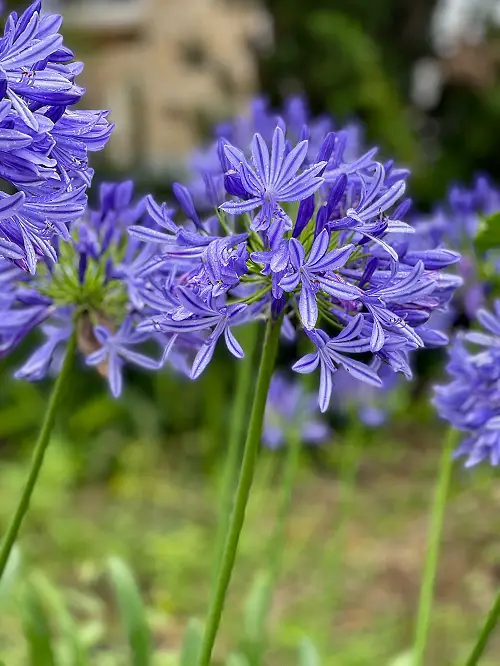
Botanical Name: Agapanthus africanus
The Lily of the Nile is an African perennial with tall stalks supporting big mounds of blue, purple, and white blooms with dark stripes along their centers. Bell-shaped clusters begin to blossom around summer and autumn, while its strappy, bright green leaves keep it attractive throughout the year.
7. Dahlia
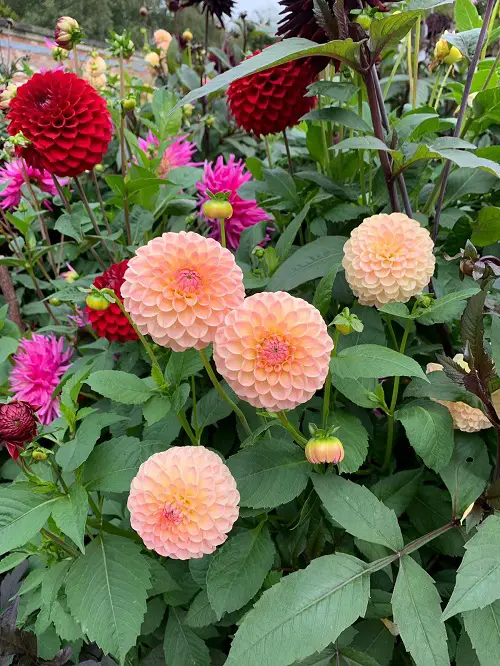
Botanical Name: Dahlia spp.
The chosen favorite of Queen Victoria had to make it to our selection of the prettiest flowers in the world! With long flowering periods and ever-lasting blooms, the Mexican national flower is known as the Queen of the Autumn Garden, with good reason.
Their petals can be big and fluffy, thin and wispy, or even twist and curl! And the different colors worn by these heat-loving plants decide their symbolism. For instance, black dahlias are said to be a warning of betrayal and sadness.
8. Kohleria

Botanical Name: Kohleria
Kohlerias are tropical stunners with blooms in every hue imaginable! Straight out of a fantasy, these high-definition bugle-shaped blossoms are fashioned with contrasting zigzag stripes, polka dots, or wiggly doodles on multi-shaded petal canvases.
Despite their easy-to-grow, fast-spreading repute, Kohlerias nearly went extinct in the 20th century and only recently has begun reviving.
9. Chrysanthemum
Botanical Name: Chrysanthemum × morifolium
These edible, aromatic flowers are famously bold and beautiful! While in Chinese culture, they symbolize luck, the French use mums to cherish the dear departed. With stories and cultivars galore, we pick out our favorite mum to make it to our prettiest flowers on the planet list–Allouise Pink!
Chrysanthemums come in many forms and colors and thrive in full sun. Just deadhead a lot and fertilize regularly for prolific blooming.
10. David Austin Rose
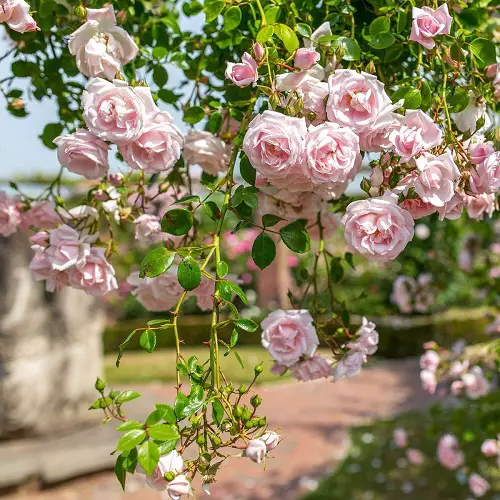
Botanical Name: Rosa ‘David Austin’
Is it possible to take perfection and make it better? Legendary British rosarian David Austin did exactly that! Having released over 200 varieties in his lifetime, David Austin took heirloom roses and improved them for hardiness, consistency, and long-lasting multiple blooms.
Appearing in congruous cup shapes or as spread-out rosettes, these varieties produce stronger fragrances, come in the rarest hues, and are repeat bloomers!
11. Delphinium

Botanical Name: Delphinium elatum
With over 300 species in their kitty, some varieties of delphiniums can grow up to a whopping 6 feet! These pretty cousins of buttercups appear in tall clusters of blue, white, and purple in areas with cool or mild summers.
The black and white centers of the flowers are known as bees, and guess what? Butterflies and honeybees love these sun-loving summer bloomers!
12. Foxglove

Botanical Name: Digitalis purpurea
These deadly toxic belles of the floral kingdom get their name from the shape and size of their flowers, which are perfect for foxes to wear on their paws like gloves! They come in various colors, like pink, purple, red, and white, with stitched-up dotted contrasting patterns in their interiors.
Foxgloves are best displayed when planted together in groups. They attract bumblebees, which sometimes spend the night in their tubular blossoms and flutter away with sunrise.
13. Protea
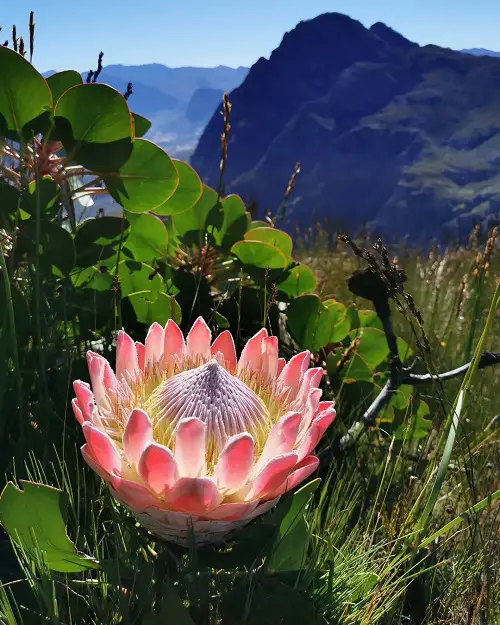
Botanical Name: Protea cynaroides
Protea flowers are dome-shaped clusters of long, tubular petals. We also added them to our list of the biggest flowers. Spiky and delicate, this South African native symbolizes change and transformation.
These crowning glories love the sun and well-drained soil. Plant them on slopes with good ventilation to ensure proper drainage.
14. Wisteria

Botanical Name: Wisteria sinensis
This deciduous, twining climber produces fragrant racemes of purple and blue flowers that magically cascade over walls, railings, and arbors. With sweet and musky scents, different varieties produce blooms in spring or summer.
Also appearing in white, yellow, lilac, and pink, prune and train these long-lasting, fertile vines over sturdy structures like arbors and gazebos to enhance their dreamy aesthetic.
15. Hydrangea
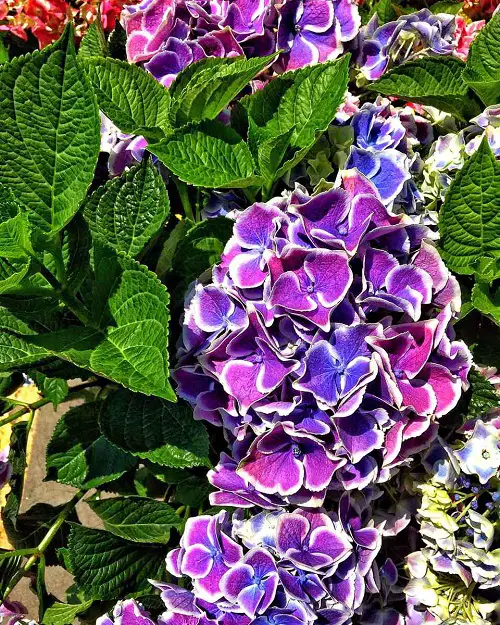
Botanical Name: Hydrangea
These fast-growers produce enormous flower clusters in a range of hues that alter with soil acidity! Flowering at different times of the year, certain varieties take on colors from a spectrum of pink and blue according to the soil pH.
Plant these deciduous shrubs in autumn or early spring in fertile, well-draining soil with plenty of moisture. Here’s how you change their color.
16. Passionflower
Botanical Name: Passiflora incarnata
The bizarre blooms of the Passionflower set traps, camouflage themselves, and release toxins just to prevent and deter damage from unwanted pollinators. Clearly picky about who sits on them, they put in all that effort to blossom for just about a day. But when they do bloom, what a spectacle!
Passionflowers’ blooms emerge from late spring to early summer, with white, pale yellow, purple, pink, and even red petals with colored, contrasting bracts. They are easy growers and adapt to different habits.
17. Anemone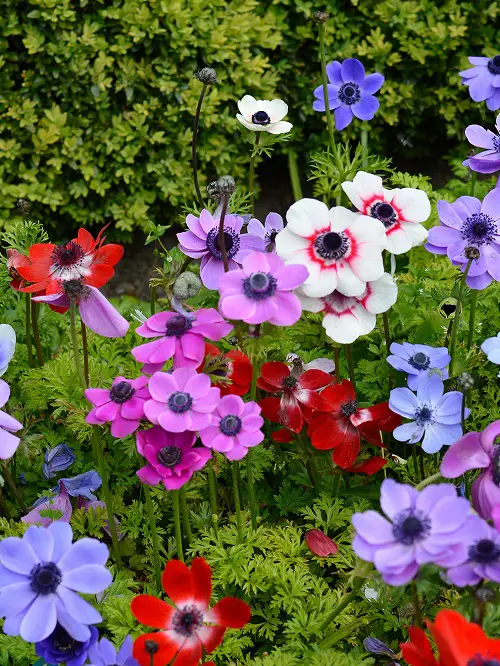
Botanical Name: Anemone
In many folklores, fairies and magical creatures sleep within the soft petals of these surreal flowers! Also called windflowers, these perennials’ upward-facing cupped blooms look similar to poppies.
They often appear with five to six petals in blue, pink, red, white, yellow-green, or purple and take 12 to 15 weeks after planting to start flowering.
18. Parrot Tulips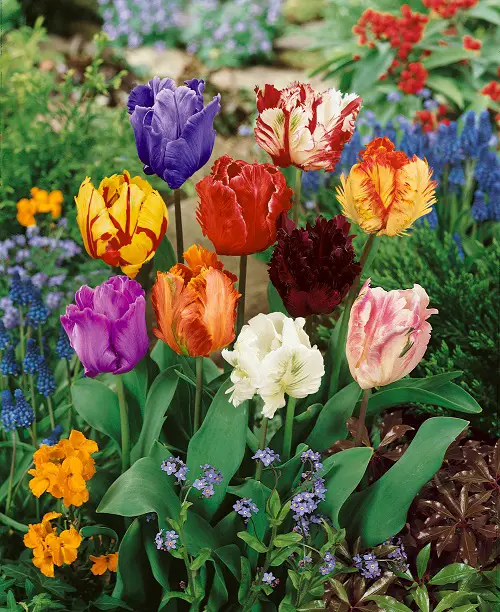
Botanical Name: Tulipa gesneriana
Thanks to their twisted or curled petals and vivid color combinations, Parrot tulips become the prettiest flowers in any garden. These sun-loving plants produce bright, ruffled, papery blooms that resemble the colorful feathers of parrots.
Appearing in patterned hues, they bloom in spring and enjoy cool winters and warm, dry summers.
19. Hibiscus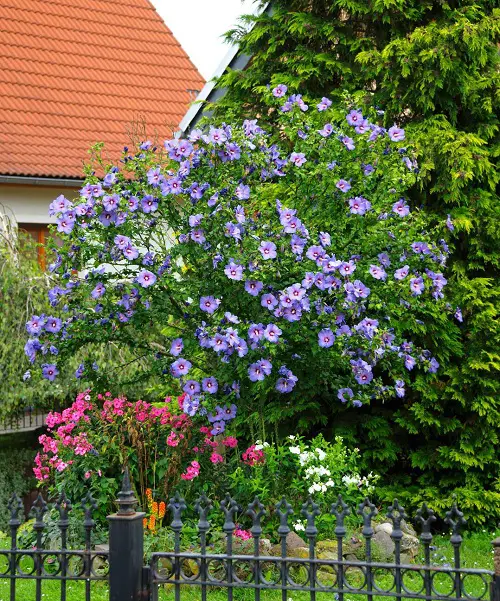
Botanical Name: Hibiscus
With natural botox properties, this queen is a regular in floral pageants! And what’s more, its large, trumpet-shaped blooms open wide in innumerable hues just as the rest of the garden begins to fade late in summer.
These thirsty plants enjoy full sun and rich soil. Depending on your climate, you can grow either a tropical or hardy hibiscus.
20. Japanese Camellia

Botanical Name: Camellia japonica
Move over roses! Here comes the romantic Camellia with delicate layers of mildly fragrant petals and an array of hues and patterns. A prized ingredient in perfumes with rare floral notes, bushy flowers appear in white, pink, and red from late winter to spring.
Popular among butterflies, this slow-growing shrub enjoys sandy soil and partial sun.





